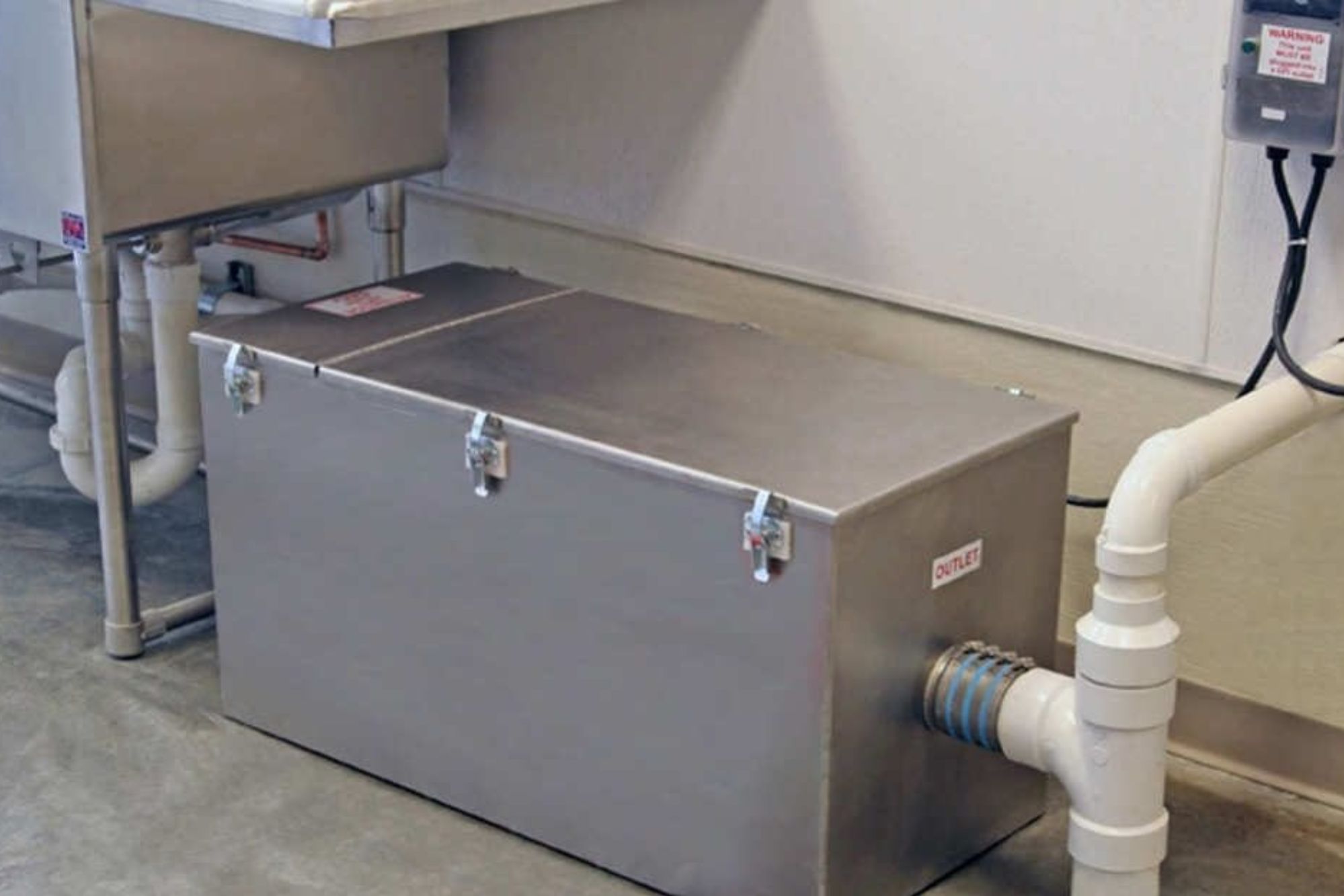Health inspectors don’t care how tasty your menu is; they care about the fat, oil, and grease your sinks send into city lines. One citation can shut a kitchen for days, so owners open Google and type “grease trap installation near me” hoping to find a fast, code-compliant answer.
The choice usually narrows to two options: a compact under-sink unit or a larger underground interceptor. Each solves different pain points — space, volume, maintenance budget — and picking the wrong style can saddle you with constant backups or costly retrofits.
Let’s break down the decision so you land on the trap that fits both your workflow and Kansas plumbing ordinances.
Capacity and Flow: How Much Grease Are We Talking?
Under-sink traps handle modest flow from one or two fixtures. They’re measured in gallons per minute (GPM) and typically range from 10 to 50 GPM — enough for a small café or food truck. Underground interceptors start around 500 gallons and scale past 2,000 for institutions like hospitals or hotel banquet kitchens.
Bigger tanks slow the effluent, giving fats time to float and solids to settle. If your operation runs multiple fryers, dishwashers, or tilt skillets, an under-sink unit clogs quickly and pushes grease into the municipal main. Our techs use fixture counts and flow calculators to size traps that won’t overflow during a Friday dinner rush.
Space and Layout Constraints
Tight Kitchens Benefit from Under-Sink Units
Many downtown Topeka storefronts were never designed for commercial kitchens. Walls can’t move, and floor stacks may sit inches from foot traffic. Under-sink traps bolt directly beneath the three-compartment sink, staying inside the equipment envelope. Cleaning requires no outside access, just a removable lid and vacuum hose.
Wide Lots Welcome Underground Tanks
If your building has rear alley space or open parking, an underground interceptor keeps maintenance outdoors. The installation crew excavates, sets the tank below frost depth, and runs a dedicated line from kitchen fixtures. The lid stays flush with concrete so delivery trucks pass overhead without issue. You also sidestep odor complaints, since the interceptor vent line sits away from the dining room.
Downtime and Installation Cost
Under-sink installs wrap in a day and rarely need permits beyond standard plumbing inspection. Underground systems involve excavation, traffic control, and concrete restoration. We often schedule that work during remodel phases or after hours to keep chefs cooking.
Material price differences can surprise owners at first glance, yet factoring in pumping frequency (every one to two weeks for small traps versus quarterly for large interceptors) often evens out long-term costs.
Maintenance Realities
A small unit fills fast. Ignoring service dates leads to slow drains, foul smells, and emergency calls. If you’ve searched “grease trap pumping near me” more times this month than you’ve checked food-cost reports, capacity is too low. Underground tanks store more sludge, giving you a bigger safety margin.
Pumping still matters — our vacuum trucks pull, wash, and dispose responsibly — but service windows stretch longer, reducing schedule disruptions. We send automated reminders tagged to Kansas City and Topeka municipal requirements so you never miss a deadline.
Code Compliance Across Northeast Kansas
Topeka sets minimum trap sizes based on kitchen square footage, while Kansas City, KS focuses on seating capacity and wastewater peak flow. Both municipalities levy fines for downstream blockages traced to restaurants.
Our permit staff deals with each jurisdiction weekly and submits engineered drawings where required. Whether your choice is under-sink or underground, we make sure inspectors sign off the first time.
How Downing Septic Guides the Decision
Business owners who google “grease trap installation near me” expect more than equipment — they need a road map from sizing to final inspection. Here’s our step-by-step approach:
- On-Site Assessment – We measure flow rates, fixture load, and available square footage.
- Transparent Quotes – One proposal lists tank, excavation (if needed), permits, and pump-out schedule. No surprise add-ons.
- Master Plumber Oversight – Licensed crews perform every weld, gasket, and pressure test.
- 24/7 Follow-Up – Kitchens never close at 5 p.m. Neither do we. After-hours calls reach a local dispatcher, not an out-of-state center.
- Maintenance Calendar – Digital reminders sync with local codes, so compliance stays effortless.
Industry-Specific Considerations
Restaurant vs. Brewery
Breweries often assume they’re grease-free, but spent grain and hop residue create similar blockages. We’ve installed shallow under-sink units on mash tun drains paired with small underground solids interceptors at the trench floor drain — keeping the brew deck clean and local code happy.
Food Truck Commissaries
Shared prep kitchens cram multiple tenants into tight square footage. Individual under-sink traps with labeled cleaning schedules prevent finger-pointing during inspections. Our team trains managers on visual fill indicators so everyone knows when to call for service.
Hotel Banquet Facilities
Events spike grease output unpredictably. Underground interceptors sized for banquet peaks prevent sudden dining-room closures during weddings or conferences. Remote monitoring sensors can text alerts when layers reach pump-out thresholds, giving engineering crews lead time.
Ready to Decide with Confidence?
Downtime, fines, and surprise pump-outs vanish when the right trap meets a solid service plan. Downing Septic has delivered that peace of mind across Northeast Kansas for more than two decades.
Reach out, compare options, and lock in the system that keeps your kitchen running smooth. Contact us to schedule a site visit and learn why our customers stop typing “grease trap installation near me” the moment we pick up the phone.


